Genre: Action Developer: SIMS Co. Publisher: Tecmo Players: 1 Released: 1991
Of all the action games that came out on the NES, not many stood toe to toe with the Ninja Gaiden series. They were popular, well-made, filled with cinemas that told a simple yet decent story, and they… were… DAMN hard. Enemy placements that seemed cruel, a nasty bit of infinitely respawning enemies, and some tough jumps that were made even tougher thanks to the aforementioned enemies. What not everyone back in that time period knew, was that there was a Master System entry to the series. Also called Ninja Gaiden, this 1992 Europe-only game by SIMS came out when the Master System was basically dead in the U.S., which meant few gamers outside of the UK even knew it existed until many years later via the Internet. The question is, is this entry in the series’ family the one that the parents brag about to everyone, or the one that no one invites to the reunions? Read on.
Ryu Hayabusa receives a message that Dragon Village, home of both himself and the Dragon Ninja clan, has been wiped out. Quickly returning there, he finds that all but one villager is dead. Though mortally wounded, the villager tells Ryu that the Sacred Scroll of Bushido has been stolen; a scroll so powerful, that the one who possesses it could take over the world with its use. The one who took it must be stopped, and it falls to Ryu, the last of the Dragon Ninja clan, to get the scroll back and save the world from the one who wants to enslave it.
Visually, Ninja Gaiden for the Master System is a pretty nice looking 8-bit game. The sprites for the main characters are on the small side, but they also have a fair amount of shading and detail in them. Truth be told, there are no large sprites in this game, as even the biggest bosses are really only about one and a half times the size of Ryu. While the animation for Ryu is pretty good, many of the enemies are made up two or three sprites total for all of their animations (some even only have one), which can make the game feel a bit framey at times. Speaking of enemies, each stage offers enemies that range from several types of ninjas, balled up enemies that roll quickly along the ground, and fireballs, to various flying enemies, soldiers, and a jumping photographer who shoots with his camera (seriously). These guys and more create a rather broad range of characters that helps to offset the lowered animation, by countering it with a healthy selection of enemy types to combat.
With the backgrounds, it’s a little bit of a mixed bag. The game’s backgrounds feature a good amount of variety, taking you from forests and lava-filled caves, to villages and a base. Most of the levels feature nice details with the occasional touch like animated leaves, twinkling stars, and moving waterfalls. And while none of them are ugly, there is a little range that has them going from nice looking, to about average. As an example, the initial forest level looks quite nice, with plenty of shading, touches of animation and good color usage. Meanwhile, the cityscape from level two features nice detail, but it feels flatter with how some of the buildings were designed and shaded. When you couple that with the sprites, this game stumbles slightly in spots, but it’s a solid looking game nonetheless.
When it comes to sound, Ninja Gaiden does fine. The music ranges from intense and getting you ready for battle, to a slightly more laid-back vibe as you watch the cinemas. Many of the melodies are enjoyable and rarely slap you with irritating or piercing notes. You’ll find the majority of the songs used outside of the cinemas and ending have a somewhat similar feel in terms of a quicker tempo, but there’s still plenty of variety in the aforementioned melodies to keep the OST from sounding like a bunch of same-tempo filler tracks. Granted, the three-note cycle on the “Pursuit in Tokyo” level does get old pretty quickly, but it doesn’t ruin the OST as a whole. As for the sound effects, you get a good range of them for the sword slashes, the metallic-like ping of blocked hits, gun shots and so forth. They do their job well given the system they’re on, with few being grating to hear thankfully. So, like the graphics, the sound stumbles only a little here or there, but it’s good overall.
The gameplay in the Master System entry in this franchise didn’t slouch. Through eight stages that are comprised of multiple sections each, you’ll work your way toward the boss at the end of each stage. Thanks to some diverse level designing, you’ll go left to right, right to left, make your way up vertically in areas, and find all kinds of nasty obstacles to avoid like lava, slippery ice, spikes, pits, and other such dangers. Meanwhile, ninjas pop up and drop down from anywhere, birds attack out of the blue, bombs are laid out in areas, killer fish spring up from the water… there’s a plethora of things to kill, dodge and be killed by between the stages themselves, and the enemies within them. But the game doesn’t just toss you in without a little help.
Beyond the usual sword you carry and slash at enemies with, Ryu has a fair number of other tricks up his shinobi shozoku. He can climb vertically via a wall jump that allows you to basically bounce between two walls that are close together, he can kneel walk to get under objects, and if you hold up while jumping, he can grab onto the bottom of many thin platforms and pull himself up. Also, if you hold down while standing on one of those thin platforms and hit the jump button, Ryu will flip under it. In addition to those various maneuvers, you get a handful of projectile and magic types, ranging from single throwing stars, to homing fireballs and a pinwheel of fire that offers limited protection for a very short time. These special attacks are used by pressing up and the attack button, and are fueled by combat points that get used each time you throw a star or use a spell. But fear not, for the combat points can be replenished via items found in scrolls that litter each stage. You can even use a bomb that clears the weaker enemies on-screen at the cost of some of your life bar. So while you may be greatly outnumbered in this game, you’ve got plenty of help that can be found along your journey.
I know what you’re thinking; there’s always something wrong with a game, right? Well, there are some gripes to be had with this game. Perhaps the biggest issue is enemy respawning. While this isn’t as blatantly asinine as the NES games with their rapid-fire and infinitely reappearing enemies when you’re just standing there, the issue still crops up quite a bit in the SMS game when you get knocked back after clearing the screen of enemies. The other main issue with the game is the boss fights. Many of the bosses are pretty easy to beat, with only one or two truly giving a challenge (namely, the flying cyborg and the final boss). But the thing is, unlike the NES games where each hit on a boss counts right away, the Master System game gives the bosses a few seconds of invulnerability after they’re hit, which drags the otherwise simple battles out in a way that doesn’t make them harder, just more monotonous.
On the minor side of things, there are the annoying cheap deaths that result from you getting knocked out of the air and plummeting to your death by not landing on any platforms. Sure, it’s a staple of the series and action/platformers in general, but it’s not a feather in either of their caps. Another issue with this entry in the series is that it’s lacking in the story department. After the three NES games and all the things that went on in them, this game’s tale feels more generic. It’s not bad per se, but it’s still a step down from what came before it in terms of scope and such. Lastly, and this is more of a personal thing, the backgrounds have no parallax at all. Its omission isn’t shocking, given that many 8-bit games didn’t feature it. But it still would have been nice to see a little on the outdoor levels, since we all know the SMS could do it with relative ease, and the three NES games that came out before it had some on various stages and cinemas.
In the end, what can we conclude with the Master System’s sole entry in this long running series? It’s a good, solid game that offers variety in the stages and enemies, controls well, gives the player a fair challenge, and it feels like a slightly more forgiving game when compared to the NES ones. It’s also a standalone game, in that it has no ties to the NES ones beyond the main character being the same, and its story ends with this game (no worries of expected sequels that never came, here). It has issues, like the respawning and the way the boss battles are handled, but those marks don’t drag the whole package down too much. So, although this game doesn’t feel quite as well put together as the NES classics, or as epic when it comes to the events within it, it does give you an enjoyable ride that likely won’t disappoint.
SCORE: 8 out of 10

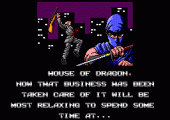
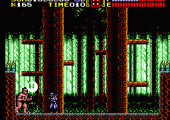
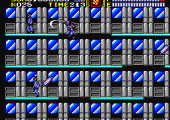
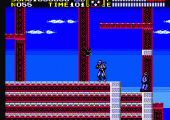
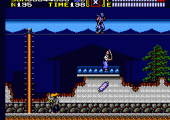
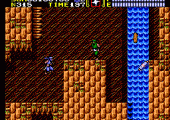
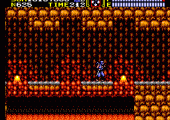
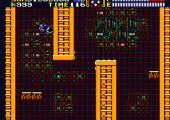
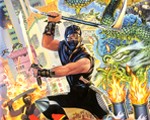
Recent Comments